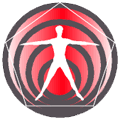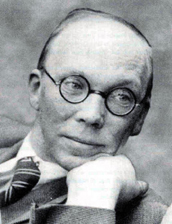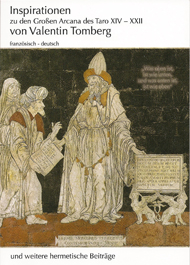 Die deutsche Version dieser Homepage finden Sie unter fhab.de Die deutsche Version dieser Homepage finden Sie unter fhab.de |
 |
|
Valentin Tomberg
Born on the 26th of February, 1900 in St. Petersburg, Valentin Tomberg made contact at an early age with idealistic communities engaged in Rosicrucian, Martinistic and Hermetic teachings.
After the 1917 Bolshevistic Revolution in which he lost both his parents and brother, he moved to Estonia in 1920 to study comparative religion and philology. Among other things, he earned his living by working as a farmhand, teacher, artist, pharmacist and post office clerk.
In 1917 he joined the Theosophical Society. Shortly thereafter he resigned because the inflexible teachings, with a disregard for the “demands of reason”, did not appeal to him. He then turned his attention to the fundamental works of Rudolf Steiner. From 1920 he connected himself with the active anthroposophical striving.
As we can gather from a letter (1920) it was his inmost desire to become a pupil of Rudolf Steiner (see; Seiß, W., Untersuchungen zu Rudolf Steiners Schulungswerk sowie den Erkenntnisquellen Valentin Tombergs [1]. Schönach 2001; p 7). In a letter of 1924 (ibid, p. 12) he asks to be admitted to the 1st class of the School of Spiritual Science. These letters were never answered. It has not been determined whether they ever reached Rudolf Steiner, for whom they were intended.
From 1930 he writes more than 30 essays for the anthroposophical journals; „Anthroposophie – Wochenschrift für Freies Geistesleben [2].“ (1930, 1931), „Das Goetheanum – Internationale Wochenschrift für Anthroposophie und Dreigliederung [3]“ (1930), „Anthroposophie – Monatsschrift für Freies Geistesleben [4]“ (1931), "Korrespondenz der Anthroposophischen Arbeitsgemeinschaften [5]“ (1935), Anthroposophische Arbeitsberichte [6] (1938), edited by Dr. Kurt Piper, Emil Leinhas, Dr. Hans Buchenbacher, C. S. Picht, Dr. Hans Erhard Lauer and Albert Steffen. (The essays are gathered in the volume: Tomberg, V., Aufsätze 1930-1938 [7] , Schönach, 3. Edition 2002). In these essays a momentous spectrum of spiritual scientific themes are unfolded: The Gospel of St. John, The Spirituality of Russia and the east, Anti-Christianity, Etheric vision, The metamorphosis of thinking, The Finnish people, The Chinese people, The Mongol people etc.
25th September 1932 he is elected General Secretary of the Estonian Anthroposophical Society. In the three monthly summer course he gives 12 lectures on Rudolf Steiners book “How does one attain knowledge of the higher worlds?” Notes on these lectures are unfortunately not available. The autumn of this year he marries the divorcee Maria Belotsvetov. Together with her he had already previously been engaged in a common anthroposophical work.
----------------------------------------------
[1] Examinations of the works on spiritual schooling of Rudolf Steiner as well as the sources
of cognition of Valentin Tomberg
[2] Anthroposophy; weekly journal for a free spiritual life
[3] The Goetheanum – international weekly journal for anthroposophy and threefolding
[4] Anthroposophy; monthly journal for a free spiritual life
[5] Correspondence of anthroposophical working communities
[6] Anthroposophical working reports
[7] Essays 1930-1938

